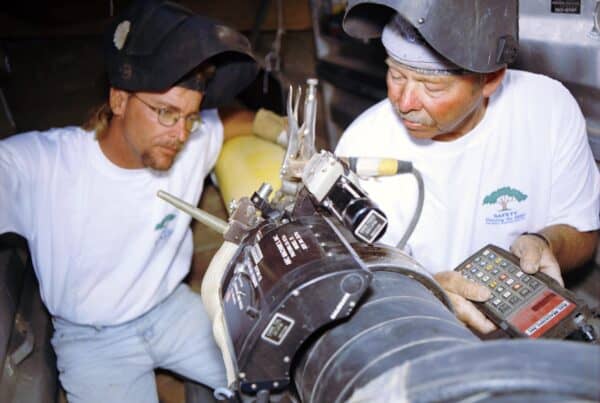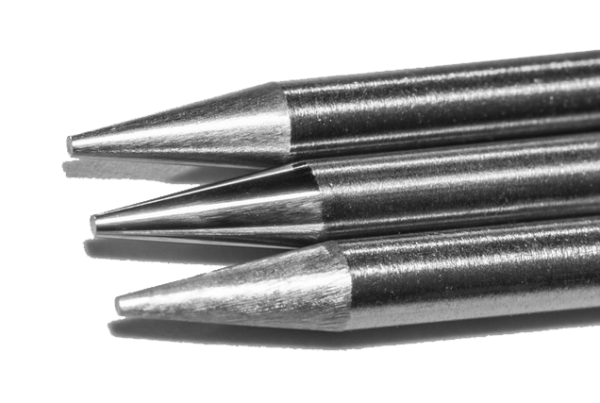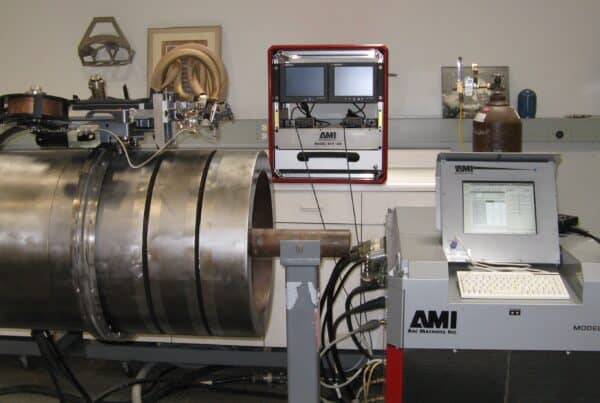
Tungsten has the highest melting point of all metals at 3422° C (6192° F), has three times the density of steel, and is the favorite metal of those who want to punch large holes in objects. However, tungsten can also create as well as destroy, and these properties make it ideal for use as a welding electrode. Tungsten electrodes are important in welding some of the most useful but difficult-to-work metals and alloys known to humankind.
However, not all tungsten electrodes are created the same. The type of tungsten electrode chosen for a welding project matters a great deal to the final quality of the welds it produces. Often, since tungsten is rather expensive, manufacturers choose to use the most common and least expensive tungsten available. However, tungsten quality does have an impact on the welding process. For GTAW, the cost-effective choice is not the least expensive tungsten, rather the right tungsten with the proper finish for the welding application. Choosing the correct GTAW tungsten electrode type for the joint type and the material being welded is vital to creating the precisely optimized welds that today’s industries demand.
Standard GTAW Tungsten Electrode Types

Optimizing welds for consistency, strength, and reliability is vital to meeting the demands of today’s industries and will only grow more vital in the future. In large part, the ability of welders as individuals and of welding as a discipline in rising to these challenges will be impacted by the quality of the tungsten electrodes used in these projects. The composition and machining of tungsten electrodes are key contributors to a consistent weld arc, the crystalline formation of the metal laid down, and the structural form of the weld. There are several types of standard GTAW tungsten electrodes, and their composition can be distinguished at a glance by the color of the non-welding tip of the electrode. Less common tungsten electrode types meant for specialized welding can be distinguished by the absence of a color, and their exact composition and intended use should be on the packaging and traceability documentation.
Needless to say, if the tungsten type cannot be determined it should not be used for welding, and since some alloying agents that are added to tungsten—such as thorium—pose a radiation risk when ingested, a welder shouldn’t grind or machine a tungsten electrode unless they are certain what it is made of.
The color codes of the most common GTAW tungsten electrode types, their composition, and some notable features are given in the chart below:
| Color | Additive | Tungsten Percentage | Additive Percentage | Current | Notable features |
| Green | None | 99.5 | 0 | AC | Stable arc with AC welding, not typically used for DC welding. Tip is balled, normally used for aluminum. |
| Red | Thorium | 97.3 | 1.7-2.2 | AC/DC | Reduced rate of consumption, strong arc starts, reduced tungsten deposition. However, thorium is radioactive. |
| Orange | Cerium | 97.3 | 1.8-2.2 | AC/DC | Excellent arc start at low amperages; works well with thin or delicate metal. |
| Gold | Lanthanum | 97.8 | 1.3-1.7 | AC/DC | Excellent arc starting and arc stability at both low and high temperatures. Currently the best alternative to thoriated. |
| Brown | Zirconium | 99.1 | 0.15-0.4 | AC Only | Extremely stable arc and low levels of tungsten in the weld. Tip is balled, normally used for aluminum. |
| Gray | Nonstandard, can include any previous additives along with terbium and yttrium. | NA | NA | NA | Indicates a nonstandard GTAW tungsten electrode for specialty use. |
The additives in a tungsten electrode change its properties in ways both subtle and large. Oxides of thorium, cerium, lanthanum, and zirconium introduced to the tungsten lower the electron-work function or the minimum amount of energy needed to move an electron from an atom. This means that less energy is required to start an arc and to maintain it. This has the result of enhancing arc stability while improving weld formation and reducing the level of heat input into the workpiece.
These alloyed GTAW tungsten electrode types create higher quality welds in thin-wall tubing and delicate parts that pure tungsten electrodes would burn through. It also means that they are a better choice for welding metals that are sensitive to heat. The choice of tungsten electrode is especially important when it comes to welding Monel®, Inconel®, and other similarly demanding metals because of the additional level of control that high-quality electrodes offer. GTAW is already widely acknowledged as the best way to weld Monel®, and choosing the right electrode is a key step in assuring a high-quality Monel® weldment. However, the composition of the tungsten electrode used for a weld is not the only factor that matters. The geometry of the electrode tip, whether that tip is pointed or balled, the angle of the tip, the surface finish, and the process used to grind it can all affect the resulting weld.
Grinding Tungsten Electrode Tips for Superior Quality Welds
Typically, tungsten electrodes of all types arrive with blunt tips and it is up to the welder to grind them into the shape needed using a bench grinder. This provides a good enough weld for general manual applications. However, each welder may prepare the tungsten differently utilizing multiple grind methods. The variation and the coarse grind that results from these methods can affect the electrode in the following ways:
- Vaporization: A coarse weld allows more of the material the tungsten is alloyed with to release from the electrode during welding. This reduces the overall lifespan of the electrode and introduces unanticipated variables into the TIG welding process since the properties of the electrode change as it is used.
- Arc Stability: A manually ground tungsten electrode can be very uneven at the microscopic level—or even to the naked eye. This will affect arc start, arc shape, and arc stability while welding. And, since weld formation is a result of action at the molecular level, even slight imperfections in the grind can have a large impact on the finished weld.
- Tungsten Inclusions: Inevitably, grinding a tungsten electrode creates microscopic burrs. During the action of welding, these microscopic burrs can break off and become included in the weld. This is a form of contamination and even small amounts of tungsten in a weld are unacceptable in some of today’s high-level applications and can contribute to costly and unnecessary Non-Destructive Testing (NDT) failures.
Unexpected variations in welds are becoming less acceptable as technical standards and demands for precision and consistency increase. Using machine-ground tungsten electrodes ensures that the electrode is ground to tight tolerances and that the surface is significantly more consistent, eliminating the electrode grind as a source of variation in weld production. This helps welders and welding processes meet increasingly high standards. Eliminating variation is especially important in the case of welding done by automated and orbital welding machines, since these cannot reflexively adjust to variation mid-weld in the same way that an experienced welder can. Utilizing machine-ground tungsten electrodes in combination with automated and orbital welding machines can also significantly reduce downtime. This is due to the combination of precision prepped tungsten and the exceptional arc control provided by the automated GTAW application.
At the same time that demand for precise, high-level welding is increasing, fewer welders are available with the skill and experience needed to make these welds. The solution for many manufacturers has been automating more of the welding process. This is especially true in challenging tube and pipe welding, in which the electrode must be moved around the entire circumference of a circular piece. However, automated orbital welding requires consistency that can only be provided by precision machine-ground electrodes. The developer of any TIG welding program should pay as much attention to the choice of GTAW tungsten electrode type as to welder qualifications and the choice of welding machine. Tungsten electrodes are at the very center of today’s advanced technology, and they will matter even more in the manufacture of tomorrow’s technology.
Arc Machines, Inc. is at the forefront of welding technology with advanced, reliable GTAW orbital welders and the pre-ground GTAW tungsten electrodes needed to support them. For inquiries regarding products, contact sales@arcmachines.com. For service inquiries, contact service@arcmachines.com. Arc Machines welcomes the opportunity to discuss your specific needs. Contact us to arrange a meeting.




